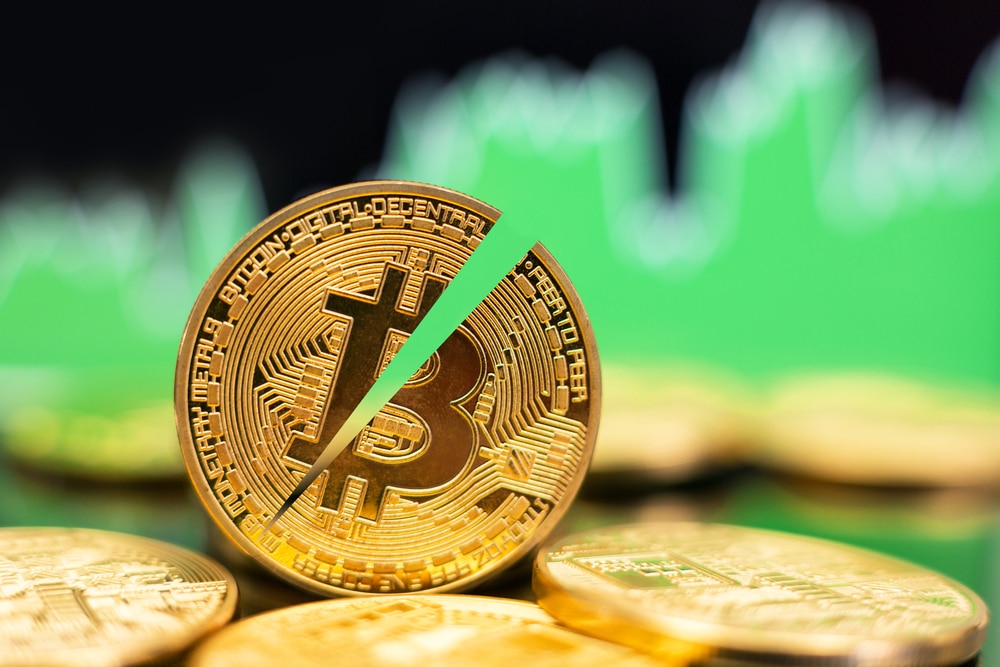
Understanding Bitcoin Halving and Bitcoin ETFs and Influence on Supply and Demand
The forthcoming halving event in late April deploys a unique design to lower the Bitcoin supply on the market. The ETF issuers are optimistic that the inclusion of the halving in the Bitcoin code keeps Bitcoin inflation in check, a reason for a bullish forecast.
The timing of the halving event amid the resounding success realized by the spot Bitcoin ETFs is set to translate to a Bitcoin price boom. The outcome is set to replay the age-old supply and demand principle.
A detailed scrutiny of the Bitcoin activity shows that the token will realize halving in April, a programmatic event occurring within the blockchain every four years. It implies that the Bitcoin rewards realized by the miners – identified as parties securing the network, will be reduced in half.
Halving Necessary to Check Inflation
The supply crunch targets keeping inflation in check. It occurs that the newly approved ETF issuers are riding the surging demand of the lead token by market capitalization as per CoinGecko data.
Bitwise chief investment executive Matthew Hougan recently considered that the interplay of supply-demand forces yields a recipe for higher Bitcoin prices. Bitwise executive, whose firm is behind the BITB ETF, believes the halving will accelerate the price rally following the halving event.
Hougan considers that the persistence of the current demand would see the investors who held the token before the ETF approval consider selling it to the ETF complex. The executive believes that the investors are pondering at what point they will sell the Bitcoins.
Bitcoin ETFs comprise investment products traded similarly to stocks, allowing investors to gain token exposure without holding and buying the crypto asset directly.
These products became available in the US, hindered by the SEC’s perennial denial of the applications till January 10 to end the decade-long wait. The approval followed a series of amendments as the issuers complied with the SEC requirements.
Since unveiling the 10 Bitcoin ETFs, the segment has realized billions of dollars in inflows. Before the looming halving, the hype surrounding the ETF’s approval fueled the Bitcoin 154% growth in 2023. The price rallied 12% to test above $51,000.
Bitcoin Price Subject to Demand-Supply Forces
Economic theory indicates that the price rallies relative to the product’s demand and decreases supply increases. Halving involves a programmed process to cap the supply of Bitcoins at 21 million.
The halving slows the coins’ creation, which will see Bitcoin prices rise as demand increases. The extent to which the price will rally remains uncertain, though issuers project the Bitcoin price to test new heights.
A recent Bitwise report considers halving will yield a supply crunch at $6.2 billion of coin value entering the market annually.
The president of 21Shares Bitcoin spot ETF, Ophelia Snyder, projects the Bitcoin price as bullish as the halving looms. She added that the daily demand for the Bitcoin ETFs is relatively larger and would only aggravate further following the halving.
Snyder considers the ETFs to take more Bitcoins than the halving impact on the daily creation. She approximated the ETFs as consuming twice the amount daily.
Bitcoin Price Rally to Extend Beyond Halving
The projection of Bitcoin price increases could exist beyond halving. Since ETFs emerged, analysts consider that the primary driver for Bitcoin demand rests upon the retail side.
Synder considers that the driver could change from retail investors to institutional investors as advisors, brokers, and banks complete the checks.
Bitcoin is likely to witness increased demand outside the US led by Japan as the country’s cabinet approved a bill allowing investment funds to hold crypto into their investment portfolio.
Hong Kong is joining the US, with the regulators accepting the initial spot ETFs following the SEC greenlight granted to 11 applications. European investors have portrayed signs of increased interest in crypto.




